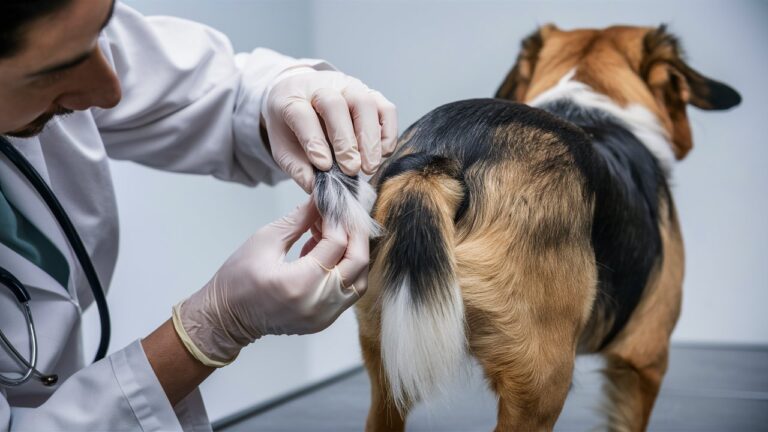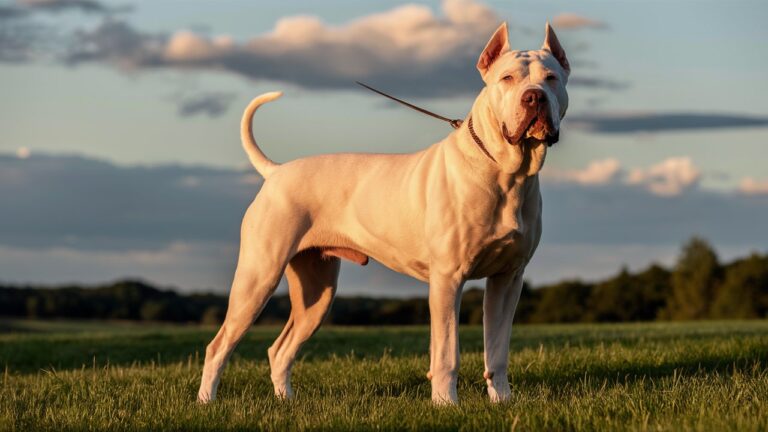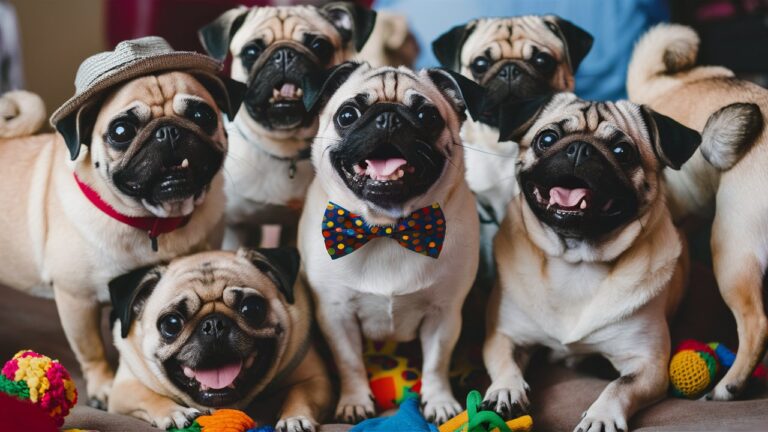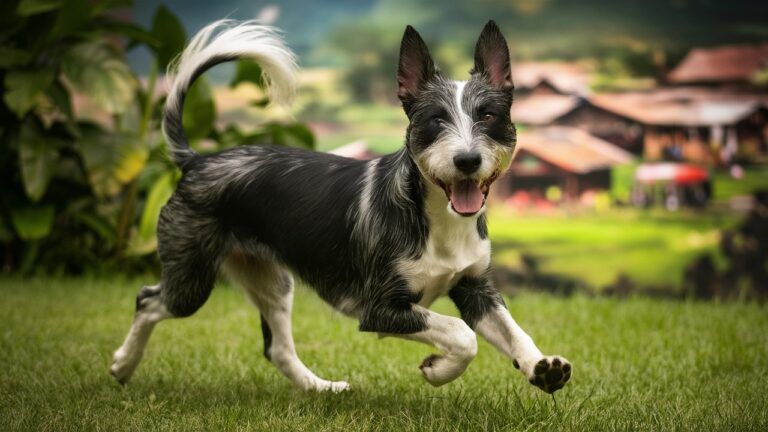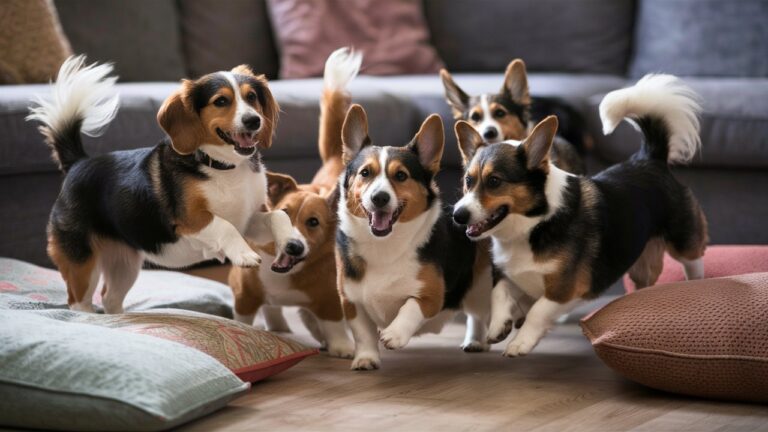Dandie Dinmont Terrier: 100% Comprehensive Guide
The Dandie Dinmont Terrier, a unique and charming breed, has captured the hearts of dog enthusiasts worldwide. Known for their distinctive appearance and lively personality, these dogs have a rich history and a loyal following. This article delves into the origins, characteristics, care, and stories of the Dandie Dinmont Terrier, providing a well-rounded and engaging look at this fascinating breed.
Table of Contents
ToggleHistory and Origins
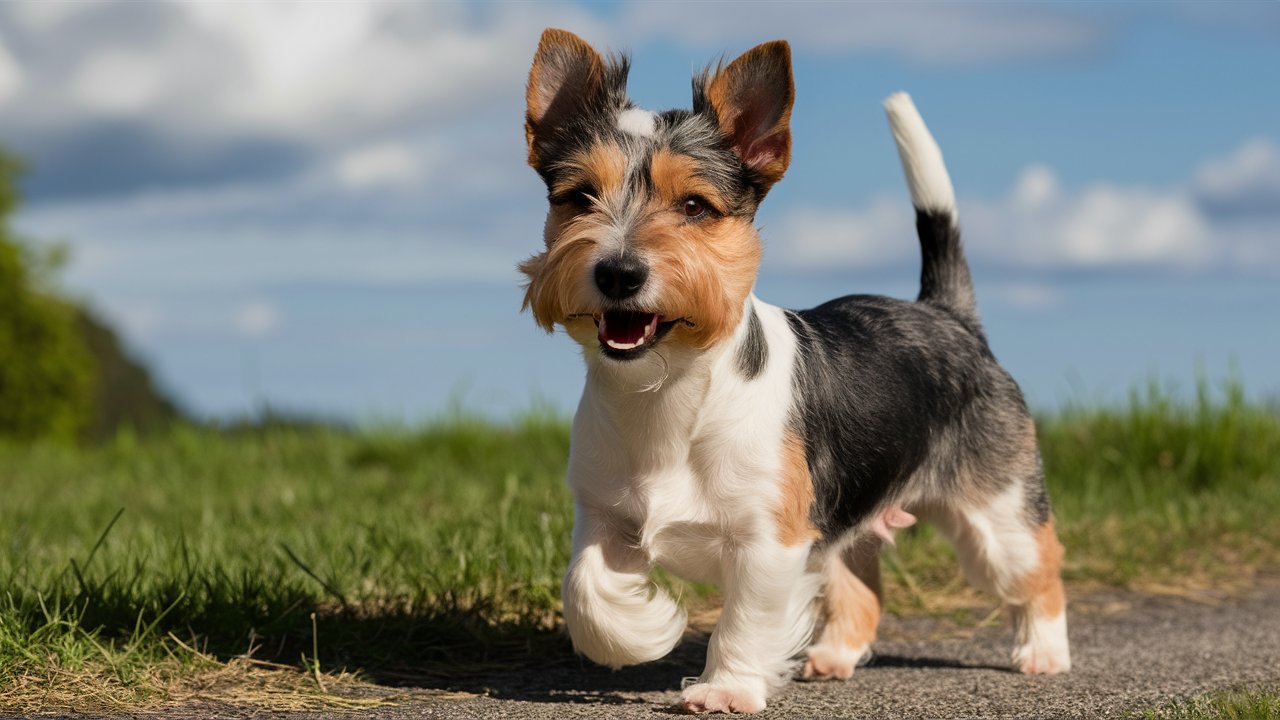
The Dandie Dinmont Terrier has a storied past that dates back to the border regions between England and Scotland in the 1700s. This breed was primarily developed by local farmers and gypsies for hunting small game, such as otters and badgers. The breed’s name, however, is attributed to a fictional character in Sir Walter Scott’s 1814 novel, “Guy Mannering.” In the book, a farmer named Dandie Dinmont owned a pack of terriers that closely resembled what we now know as the Dandie Dinmont Terrier.
Early Beginnings
The Dandie Dinmont Terrier was selectively bred for its hunting abilities. The farmers and gypsies prized these dogs for their tenacity, courage, and ability to work independently. The breed’s distinctive look, characterized by a large head, a topknot of hair, and a long, low body, began to take shape during this time.
Recognition and Popularity
The Dandie Dinmont Terrier gained recognition in the 19th century, thanks to Sir Walter Scott’s novel and the breed’s unique appearance. The breed was officially recognized by the Kennel Club in the UK in 1873. Despite its small size, the Dandie Dinmont Terrier has maintained a reputation as a determined and effective hunter.
Physical Characteristics
The Dandie Dinmont Terrier stands out with its distinctive physical features. Here’s a closer look at what makes this breed unique:
Size and Weight
Dandie Dinmont Terriers are small dogs, typically weighing between 18 to 24 pounds and standing about 8 to 11 inches tall at the shoulder. Their compact size makes them well-suited for hunting in tight spaces and also for living in smaller homes or apartments.
Coat and Color
One of the most notable features of the Dandie Dinmont Terrier is its coat. The breed has a double coat with a mix of soft and hard hair, giving it a unique texture. The coat colors are usually pepper (bluish-black to silvery gray) or mustard (reddish-brown to pale fawn). The topknot of hair on the head is a hallmark of the breed and adds to its distinctive appearance.
Head and Expression
The Dandie Dinmont Terrier has a large, well-proportioned head with a domed skull. The eyes are large, dark, and set wide apart, giving the dog a soulful and intelligent expression. The ears are pendulous and set low, enhancing the breed’s distinctive look.
Personality and Temperament
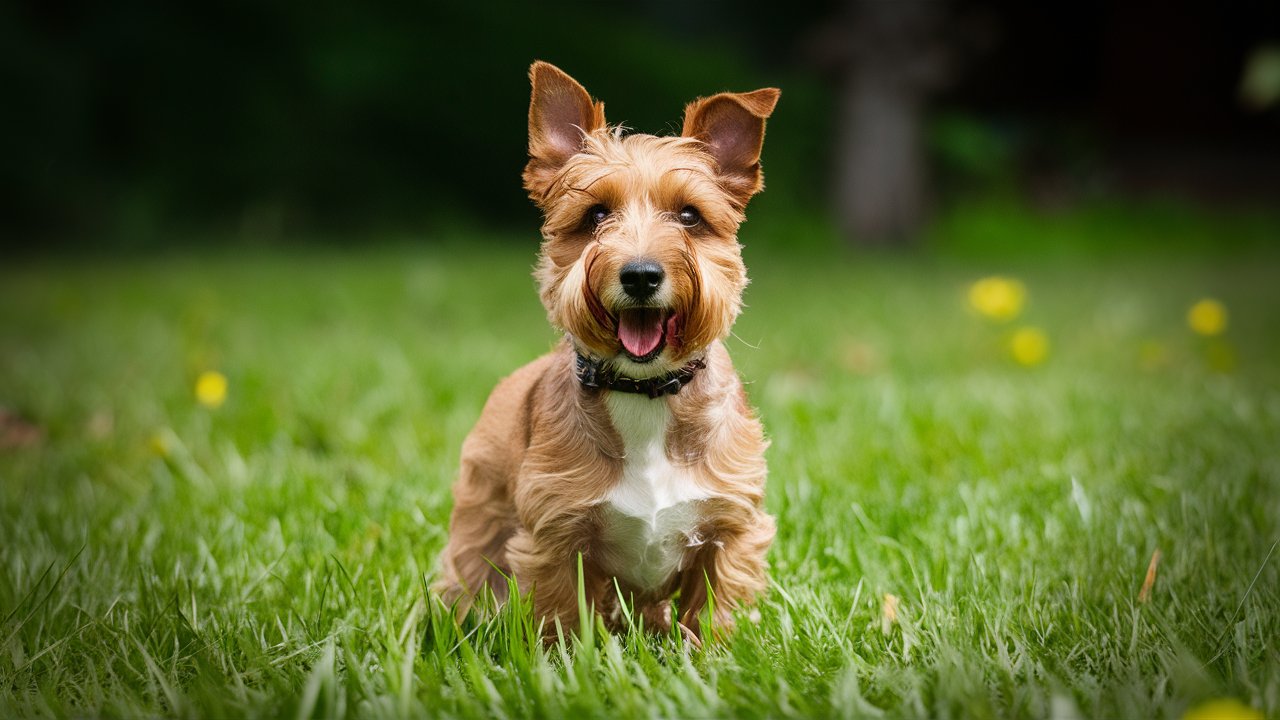
Dandie Dinmont Terriers are known for their charming and affectionate nature. Despite their small size, they possess a bold and determined personality.
Intelligent and Independent
These terriers are highly intelligent and independent, often displaying a strong-willed nature. They are quick learners but can be somewhat stubborn, requiring a firm and consistent approach to training.
Loyal and Affectionate
Dandie Dinmont Terriers form strong bonds with their families and are known for their loyalty and affection. They thrive on human companionship and enjoy being involved in family activities. Their friendly disposition makes them excellent companions for children and adults alike.
Playful and Energetic
Despite their calm demeanor indoors, Dandie Dinmont Terriers have a playful and energetic side. They enjoy outdoor activities and have a natural instinct for hunting and exploring. Regular exercise is essential to keep them happy and healthy.
Caring for a Dandie Dinmont Terrier
Proper care and attention are crucial to ensure the health and well-being of a Dandie Dinmont Terrier. Here are some essential aspects of caring for this breed:
Diet and Nutrition
A balanced diet is essential for maintaining the health of a Dandie Dinmont Terrier. High-quality commercial dog food or a well-planned homemade diet can meet their nutritional needs. It’s important to monitor their weight and avoid overfeeding, as these dogs can be prone to obesity.
Grooming
The Dandie Dinmont Terrier’s unique coat requires regular grooming to keep it in good condition. Brushing several times a week helps prevent matting and removes loose hair. Regular trimming is also necessary to maintain the characteristic shape of the coat, particularly the topknot and the furnishings on the legs and tail.
Exercise and Activity
While Dandie Dinmont Terriers enjoy indoor relaxation, they need regular exercise to stay healthy and happy. Daily walks, playtime, and mental stimulation are essential. These dogs also enjoy activities that engage their natural hunting instincts, such as scent work or agility training.
Health and Veterinary Care
Dandie Dinmont Terriers are generally healthy dogs, but like all breeds, they can be prone to certain health issues. Regular veterinary check-ups, vaccinations, and preventive care are vital to keeping them in good health. Some common health concerns in this breed include:
- Intervertebral Disc Disease (IVDD): Due to their long, low bodies, Dandie Dinmont Terriers can be susceptible to spinal issues. Careful handling and avoiding activities that strain their backs are important.
- Hip Dysplasia: This genetic condition can affect the hip joints and lead to arthritis. Responsible breeding practices and maintaining a healthy weight can help reduce the risk.
- Eye Conditions: Dandie Dinmont Terriers may be prone to eye problems such as glaucoma and cataracts. Regular eye examinations can help detect and manage these issues early.
Personal Anecdotes and Stories
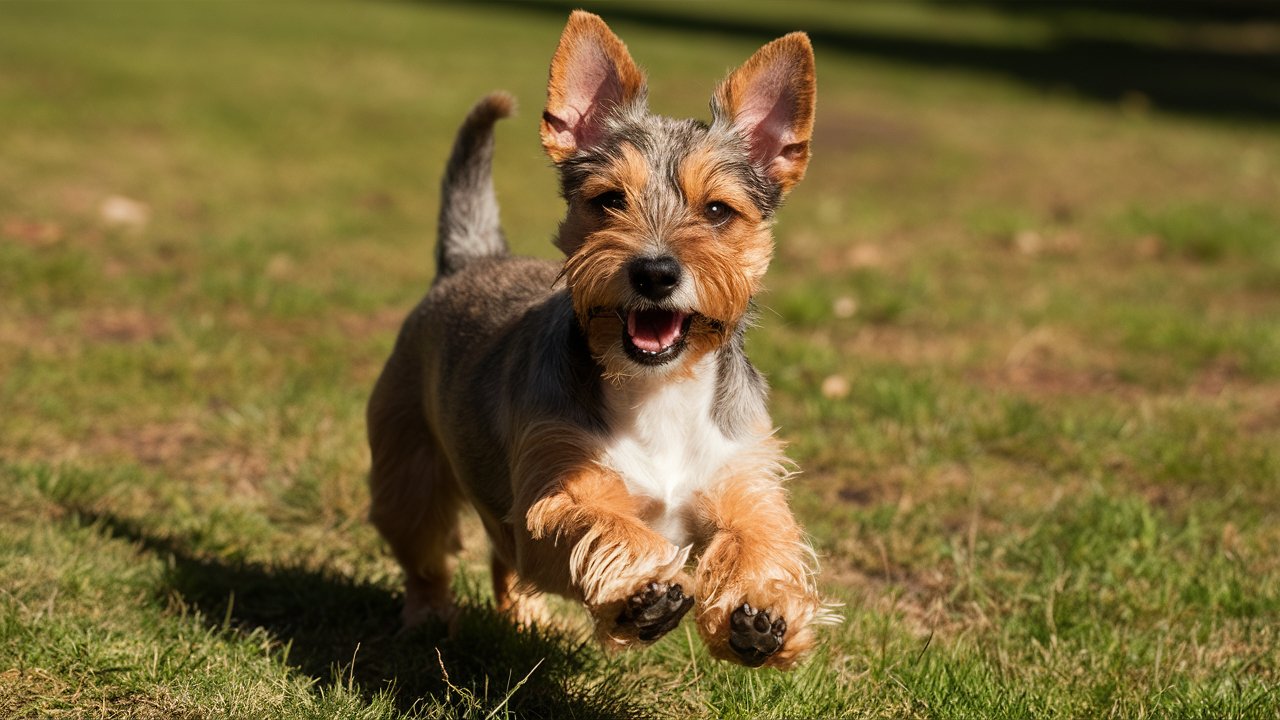
To provide a more relatable and engaging perspective, let’s share some personal anecdotes and stories from Dandie Dinmont Terrier owners.
Lucy’s Adventures
Lucy, a spirited Dandie Dinmont Terrier, lives with her owner, Jane, in a cozy suburban home. Jane recounts how Lucy’s intelligence and independent nature make her a delightful companion. “Lucy has a way of understanding exactly what I need,” says Jane. “Whether it’s cuddling on the couch after a long day or eagerly joining me for a walk in the park, she always knows how to make me smile.”
Jane also shares a memorable adventure they had during a hiking trip. “We were exploring a wooded trail when Lucy suddenly picked up a scent. She took off like a rocket, and I had to run to keep up with her. Eventually, she led me to a hidden stream where she happily splashed around. It was such a joyful moment, and it reminded me of her natural hunting instincts.”
Max’s Playful Spirit
Max, another Dandie Dinmont Terrier, lives with his family in the countryside. His owner, Tom, describes Max as a bundle of energy and fun. “Max is always ready for an adventure,” says Tom. “He loves chasing after squirrels in the yard and playing fetch with the kids. His playful spirit brings so much joy to our family.”
Tom recalls a humorous incident when Max decided to “help” with gardening. “I was planting some flowers when Max decided to dig his own holes right next to mine. It was like he thought he was my little gardening assistant. We ended up with quite a mess, but it was impossible not to laugh at his enthusiasm.”
Training Tips for Dandie Dinmont Terriers
Training a Dandie Dinmont Terrier can be both a rewarding and challenging experience. Their intelligence and independent nature require a thoughtful approach to ensure they become well-behaved companions. Here’s a detailed look at effective training strategies for your Dandie Dinmont Terrier.
Start Early
Puppy Socialization: Begin socializing your Dandie Dinmont Terrier puppy as soon as possible. Expose them to various environments, people, and other animals. This helps prevent fear and aggression in adulthood.
Basic Commands: Introduce basic commands like sit, stay, come, and heel early on. Consistency is crucial; use the same commands and hand signals every time.
Positive Experiences: Ensure that all new experiences are positive. Reward your puppy with treats and praise to create positive associations with new situations and people.
Use Positive Reinforcement
Reward-Based Training: Dandie Dinmont Terriers respond best to positive reinforcement. Use treats, praise, and play to reward good behavior. This encourages them to repeat the behavior.
Timing is Key: Reward your dog immediately after they perform the desired behavior. This helps them make the connection between the action and the reward.
Avoid Punishment: Avoid using punishment or negative reinforcement. This can lead to fear and anxiety, making training more difficult.
Be Consistent
Establish Rules: Set clear rules and boundaries from the beginning. Consistency in rules helps your dog understand what is expected of them.
Regular Training Sessions: Schedule regular training sessions to reinforce commands and behaviors. Short, frequent sessions are more effective than long, sporadic ones.
Consistent Commands: Use the same words and gestures for each command. Inconsistency can confuse your dog and hinder their learning.
Keep Sessions Short and Fun
Attention Span: Dandie Dinmont Terriers have a relatively short attention span. Keep training sessions short, ideally between 5 to 10 minutes, to maintain their interest and focus.
Incorporate Play: Make training fun by incorporating play and games. This keeps your dog engaged and motivated.
End on a Positive Note: Always end training sessions on a positive note. Finish with a command your dog knows well and reward them for it. This leaves them with a sense of accomplishment and eagerness for the next session.
Addressing Common Training Challenges
Stubbornness: Dandie Dinmont Terriers can be stubborn. If your dog is not responding to a command, stay patient and try to understand what might be causing the issue. Adjust your approach if necessary.
Distractions: These terriers can easily get distracted by their surroundings. Train in a quiet, distraction-free environment initially, gradually introducing distractions as your dog becomes more proficient.
Chewing and Digging: Dandie Dinmont Terriers have a natural instinct to chew and dig. Provide appropriate chew toys and designate a digging area to satisfy these instincts in a controlled manner.
Advanced Training Techniques
Clicker Training: Clicker training is an effective method for Dandie Dinmont Terriers. The sound of the clicker marks the exact moment your dog performs the desired behavior, followed by a reward. This precise timing helps your dog understand what is expected.
Agility Training: Dandie Dinmont Terriers enjoy activities that challenge their minds and bodies. Agility training can be a fun way to engage your dog and strengthen your bond.
Scent Work: Given their hunting background, Dandie Dinmont Terriers excel at scent work. This activity stimulates their natural instincts and provides mental enrichment.
House Training
Establish a Routine: Set a regular schedule for feeding, potty breaks, and walks. Consistency helps your dog understand when and where they should relieve themselves.
Crate Training: Crate training can be an effective tool for house training. Dogs naturally avoid soiling their sleeping area, so a crate helps them learn to control their bladder and bowel movements.
Positive Reinforcement: Praise and reward your dog immediately after they eliminate in the appropriate spot. This reinforces the behavior and helps them understand where they should go.
Leash Training
Start Indoors: Begin leash training indoors, where there are fewer distractions. Let your dog get used to the feel of the leash and collar.
Use Treats and Praise: Encourage your dog to walk beside you by using treats and praise. Reward them for staying close and not pulling on the leash.
Gradual Progress: Gradually increase the difficulty by moving to more distracting environments. Be patient and continue to reward good behavior.
Socialization
Exposure to People: Introduce your Dandie Dinmont Terrier to different people, including children, adults, and other dogs. Positive interactions with a variety of individuals help prevent fear and aggression.
Controlled Environments: Start socializing in controlled environments, such as a friend’s house or a quiet park. Gradually expose your dog to busier places as they become more comfortable.
Positive Reinforcement: Reward your dog for calm and friendly behavior during socialization. This encourages them to approach new situations with confidence.
Behavioral Training
Barking: Dandie Dinmont Terriers can be vocal. Teach the “quiet” command by rewarding your dog for being silent on cue. Avoid rewarding excessive barking with attention.
Separation Anxiety: These dogs can develop separation anxiety. Gradually accustom your dog to being alone for short periods, gradually increasing the duration. Provide toys and treats to keep them occupied.
Resource Guarding: If your dog shows signs of resource guarding, such as growling when approached while eating or playing with a toy, work on desensitization and counter-conditioning. Gradually teach your dog that having people around their resources is a positive experience.
The Dandie Dinmont Terrier in Popular Culture
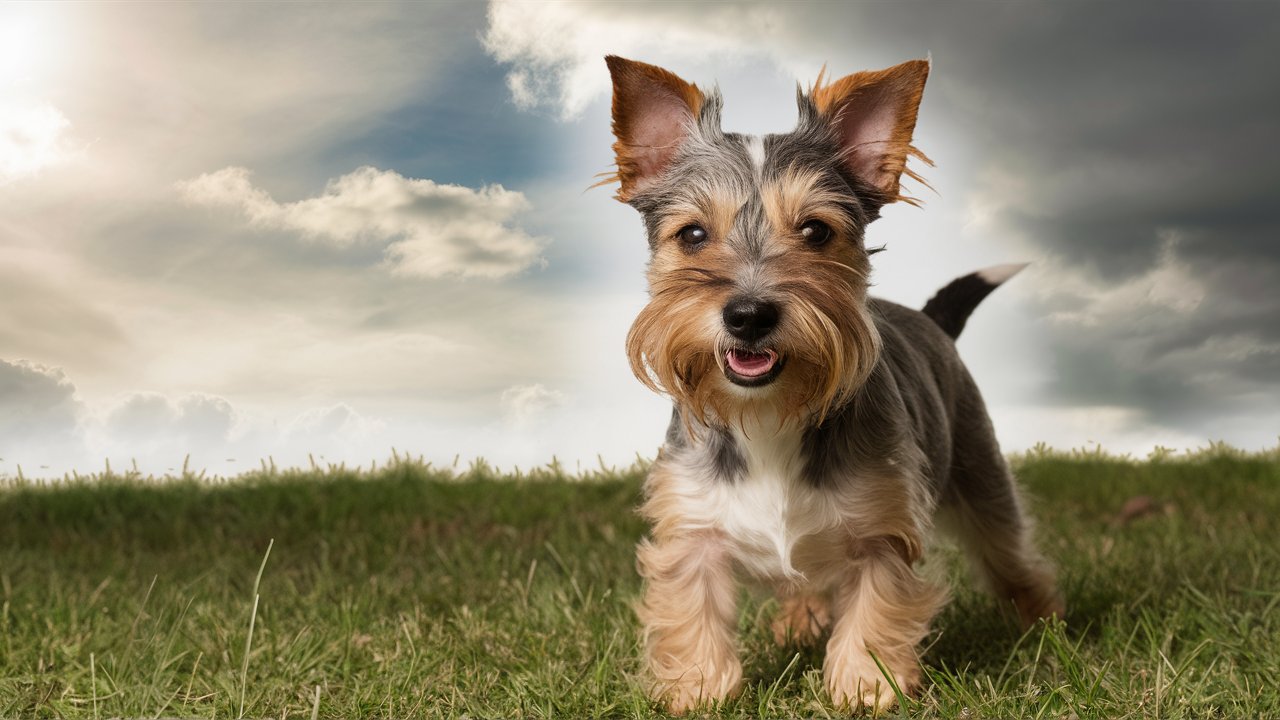
The Dandie Dinmont Terrier, with its distinctive appearance and captivating personality, has left its mark on popular culture. This section delves into the breed’s influence in literature, art, media, and even notable appearances in history, showcasing how this charming terrier has captured the public’s imagination.
Literature
The Dandie Dinmont Terrier owes much of its fame to Sir Walter Scott’s 1814 novel, “Guy Mannering.” In the book, a character named Dandie Dinmont, a farmer, owns a pack of terriers named Pepper and Mustard. These names correspond to the two recognized coat colors of the breed. Sir Walter Scott’s vivid portrayal of these terriers helped popularize the breed and gave it a unique place in literary history.
The character of Dandie Dinmont was inspired by a real farmer named James Davidson, who owned terriers resembling the breed. This real-life connection further cemented the Dandie Dinmont Terrier’s legacy in literature.
Art and Paintings
The Dandie Dinmont Terrier’s distinctive look has made it a favorite subject in various art forms. Victorian-era paintings often depicted these terriers in hunting scenes or as beloved pets of the aristocracy. Artists such as Edwin Landseer and Charles Burton Barber captured the breed’s elegance and character in their works, contributing to its popularity among dog enthusiasts.
Landseer, known for his detailed and expressive animal paintings, often included Dandie Dinmont Terriers in his compositions, highlighting their unique appearance and charm. These artworks not only celebrated the breed but also helped introduce it to a wider audience.
Media and Film
The Dandie Dinmont Terrier has appeared in several films and television shows, showcasing its endearing personality and unique appearance. One notable appearance was in the 1993 film “The Secret Garden,” based on Frances Hodgson Burnett’s classic novel. The character Dickon Sowerby has a Dandie Dinmont Terrier named Captain, who plays a significant role in the story. This portrayal brought the breed to the attention of a new generation of dog lovers.
Television programs featuring dog breeds often highlight the Dandie Dinmont Terrier for its distinctive look and charming demeanor. These appearances contribute to the breed’s ongoing popularity and recognition in the public eye.
Famous Owners
Throughout history, the Dandie Dinmont Terrier has been a favorite among notable figures. Queen Victoria, known for her love of dogs, owned a Dandie Dinmont Terrier named Dash. Dash was one of Queen Victoria’s favorite companions, and his presence in the royal household helped elevate the breed’s status and popularity.
Another famous owner was Sir Walter Scott himself, who not only immortalized the breed in his novel but also kept Dandie Dinmont Terriers. His love and admiration for the breed were evident in his writings and personal life, further cementing the breed’s association with literary and cultural significance.
Shows and Competitions
The Dandie Dinmont Terrier has a prominent place in dog shows and competitions worldwide. The breed’s distinctive appearance and unique characteristics make it a standout in the show ring. Dandie Dinmont Terriers have won numerous awards and titles at prestigious dog shows, such as the Westminster Kennel Club Dog Show and Crufts.
In these competitions, the breed is judged on various criteria, including coat, conformation, and overall presentation. The Dandie Dinmont Terrier’s success in these events highlights its enduring appeal and excellence as a show dog.
Influence on Other Breeds
The Dandie Dinmont Terrier has also influenced the development of other terrier breeds. Its unique characteristics, such as the distinctive topknot and long, low body, have been incorporated into the breeding programs of other terrier breeds. This influence has contributed to the diversity and richness of the terrier group as a whole.
Personal Anecdotes and Historical Tales
To further illustrate the Dandie Dinmont Terrier’s impact on popular culture, here are some personal anecdotes and historical tales involving the breed:
The Tale of Old Pepper
One of the earliest known Dandie Dinmont Terriers, Old Pepper, belonged to a farmer in the border region between England and Scotland. Old Pepper was renowned for his exceptional hunting skills and tenacity. His reputation spread throughout the region, and many local farmers sought to breed their dogs with him, hoping to inherit his remarkable qualities. Old Pepper’s legacy lives on in the breed’s history and lineage.
The Royal Companion
Dash, Queen Victoria’s beloved Dandie Dinmont Terrier, was more than just a pet; he was a cherished companion. Queen Victoria often wrote about Dash in her diaries, describing his playful antics and unwavering loyalty. Dash’s presence brought comfort and joy to the young queen during her early years on the throne. His story reflects the deep bond between Dandie Dinmont Terriers and their owners, showcasing the breed’s endearing qualities.
Conclusion
The Dandie Dinmont Terrier is a breed that combines charm, intelligence, and a rich history. From their origins as skilled hunters to their role as beloved family pets, these dogs continue to captivate and delight those who welcome them into their lives. Their distinctive appearance, loyal nature, and playful spirit make them a unique and wonderful breed.
Whether you’re considering adding a Dandie Dinmont Terrier to your family or simply want to learn more about these delightful dogs, we hope this comprehensive guide has provided valuable insights and information. With proper care, training, and love, a Dandie Dinmont Terrier can be a loyal and joyful companion for years to come.
